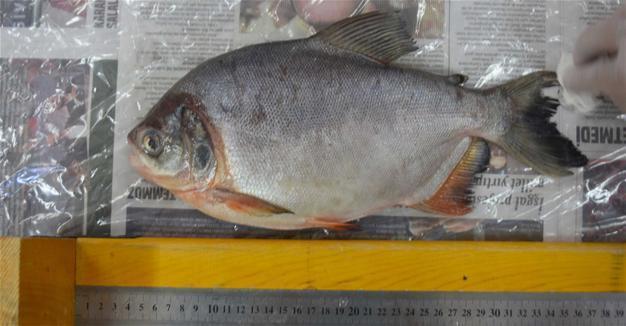Fish caught in Sivas not piranha
SİVAS

A fish caught by three fishermen a few days ago in the Kızılırmak River, running through the city center of the Central Anatolian province of Sivas, and said to be a piranha has been revealed to be a pacu, officials have said.
Pacu is a close relative of piranha, according to the officials.
“Over the last few weeks, three amateur fishermen claimed that they caught a fish, which is different from the ones here, under the Kayseri Bridge on the Kızılırmak River. The media reported that the fish was a piranha, causing panic in the region,” Food, Agriculture and Livestock Provincial Director Seyit Yıldız said.
Yıldız said research to find out the fish’s species was initiated by Cumhuriyet University’s faculty of science member Bülent Ünver and the province’s Food, Agriculture and Livestock Directorate staff. “One of the amateur fishermen, Muzaffer Metinoğlu, delivered the fish to officials for examinations. After works on the fish it was determined that it was not a piranha but its relative, pacu,” he said.
Piranha carnivorous, pacu herbivorous Yıldız said due their resemblance pacu fishes were generally mistaken for piranhas.
“Piranhas have triangular and sharper teeth while pacus have human-like plain teeth. The lower jaw of piranhas is long and has a superior structure while pacus have longer upper jaws. In our country, many people or stores that sell aquarium fishes sell pacus under the name of piranhas. It is one of the main reasons that cause the mistake. Piranhas are aggressive and carnivorous but pacus are herbivorous and not aggressive. But they can also eat meat because they are fed with meat in aquariums by their owners,” he added.
The homeland of pacus is South America. They can live in water in 22-28 centigrade degrees and grow up to 100 centimeters.
“It is not possible that pacus can reproduce in Kızılırmak as they cannot live in winter conditions. The fishes found in Kızılırmak were abandoned by their owners after being fed in aquariums,” he said.
 A fish caught by three fishermen a few days ago in the Kızılırmak River, running through the city center of the Central Anatolian province of Sivas, and said to be a piranha has been revealed to be a pacu, officials have said.
A fish caught by three fishermen a few days ago in the Kızılırmak River, running through the city center of the Central Anatolian province of Sivas, and said to be a piranha has been revealed to be a pacu, officials have said.